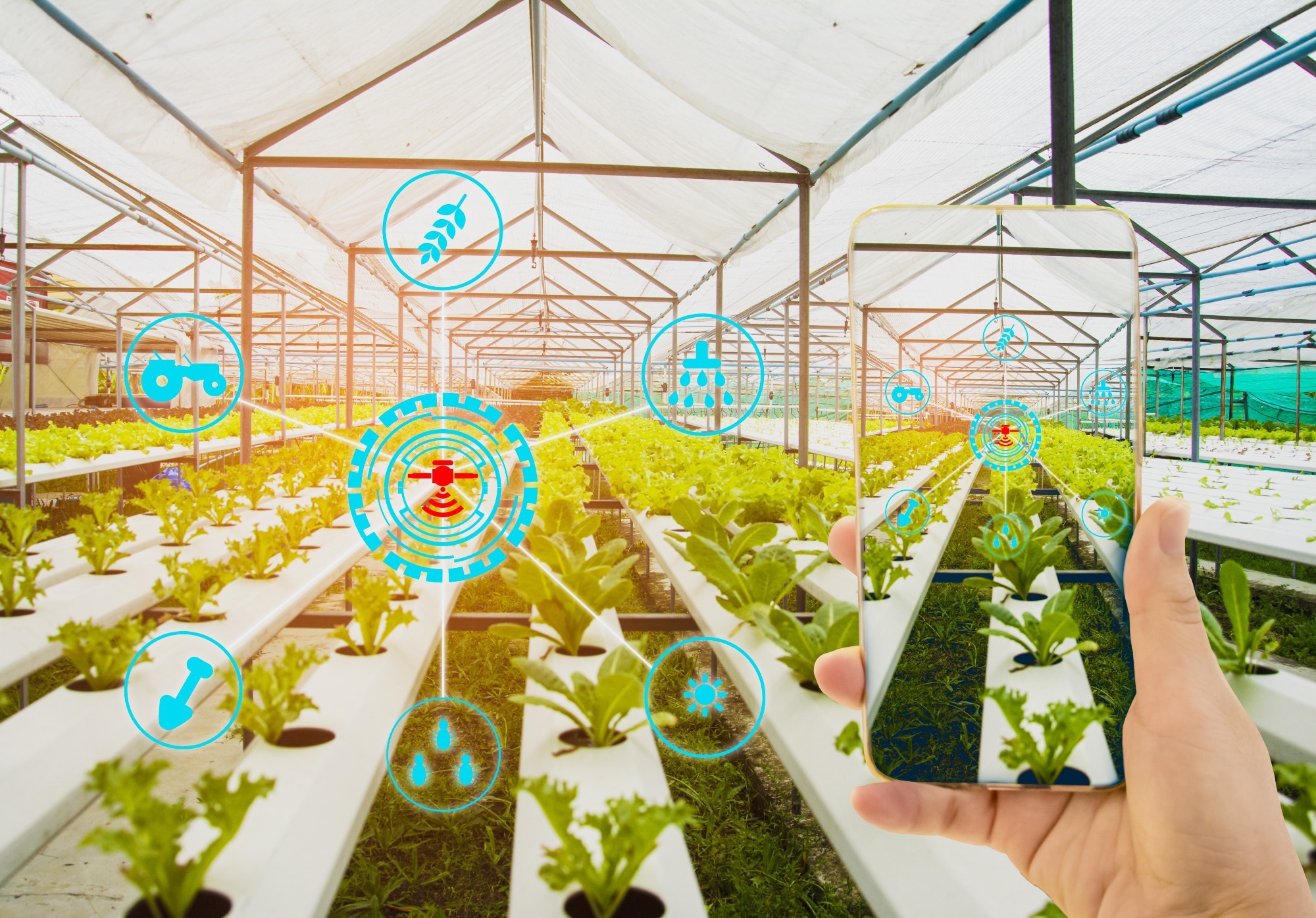A study recently published in the journal Mathematics presented a framework utilizing a multi-channeled dense neural network (DNN) to predict the temperature and relative humidity values in a greenhouse cultivating strawberries. The framework aims to determine the optimal monthly sensor locations without requiring sensor relocation. It leverages the measurements obtained from sensors with fixed locations. In essence, this study successfully made estimations regarding the micro-climate conditions within the greenhouse.
 Study: Optimizing Sensor Placement: Forecasting Micro-Climates in Greenhouses Using Dense Neural Networks. Image credit: ART STOCK CREATIVE/Shutterstock
Study: Optimizing Sensor Placement: Forecasting Micro-Climates in Greenhouses Using Dense Neural Networks. Image credit: ART STOCK CREATIVE/Shutterstock
Background
Agricultural commodities are vital in ensuring the nourishment of humans and livestock. Nevertheless, the production of crops encounters various challenges, including adverse weather conditions, soil erosion, infestation by pests, and outbreaks of diseases, all of which significantly impact the productivity and growth rate of the crops.
Controlled cultivation systems, like greenhouses, provide favorable conditions for agricultural production throughout the year. In addition, it can be observed that greenhouse settings yield greater financial gains in comparison to open-field cultivation due to their superior returns per unit area. However, the functioning of greenhouses exhibits non-linear characteristics as a result of fluctuating atmospheric conditions. Consequently, achieving optimal crop production necessitates meticulous monitoring and control.
In greenhouses, a variety of sensors are employed to monitor and regulate micro-climatic factors, including temperature and relative humidity. Additionally, sensors are used to measure soil parameters such as moisture content, pH levels, and other essential variables. These measurements are crucial for ensuring optimal conditions that promote favorable output and growth of crops. Previous research has indicated that monitoring and regulating relative humidity and temperature inside a greenhouse is intricate and arduous, primarily due to significant fluctuations in atmospheric conditions on a daily and seasonal basis.
Sensors are placed randomly in protected systems dependent on farmer resources, facility size, and technological expertise. For measurements, standard settings install a number of sensors. Multiple randomly/inappropriately arranged sensors fail to assess greenhouse microclimates accurately. Using many sensors generates a lot of data that need efficient handling. Thus, sensor quantity and placement substantially influence micro-climate estimation accuracy. As such, optimizing the number and positions of sensors, however difficult, is essential for precise micro-climate assessment and effective cultivation system control.
Methodology
The present study uses a multi-channel DNN regression model to generate an N2-dimensional vector as the output. Each element of this vector represents the sensor values associated with the N2 optimal locations for the target month. The input to the neural networks is determined by the target month, e.g. March. Specifically, the input consists of temperature or relative humidity measurements obtained from the N1 optimal locations in February. These locations are considered fixed and remain consistent throughout the entire study.
The input undergoes a sequence of four dense layers: dense_0, dense_1, dense_2, and dense_3. These layers are responsible for extracting global features from the N1 input sensor values. The global features are subsequently inputted into N2 distinct dense channels, where the resulting output signifies the forecasted sensor values for the N2 most suitable positions during the target month of March.
Each of these channels with high nitrogen density aid in extracting the specific characteristics associated with each individual sensor location. The dense channels in question comprise a solitary dense layer containing 64 units, each utilizing the rectified linear unit (Relu) activation function. As a result, the output layer consists of a single-unit dense layer. The learning model for every target month is trained for 200 epochs at a batch size of 64., utilizing the N1 fixed locations.
Major Results
The proposed framework demonstrates a significant decrease of 68.67% in the average root mean square error (RMSE) across all five months when compared to results obtained without the implementation of the DNN model. On similar lines, the analysis of RMSE reveals a significant decrease in prediction error for humidity values when utilizing the DNN-based framework. Specifically, the results indicate an overall reduction of 46.21% in error compared to predictions made without incorporating the DNN model.
Moreover, empirical evidence shows a strong positive correlation between the actual and predicted sensor values, as indicated by the Pearson's correlation coefficient. Based on the data presented in the paper, it is evident that there exists a strong correlation between the predicted sensor values and the true sensor values. On average, the correlation coefficient for temperature is 0.91, while for humidity it is 0.85.
Also, the DNN model exhibits higher prediction accuracy when provided with input from 10 sensors, as opposed to the DNN model that relies solely on 5 input measurements. In other words, increasing the number of sensors in each area will result in more accurate environmental estimates.
To sum up, the findings indicate that besides being beneficial in terms of cost reduction, the suggested framework is highly effective and applicable in forecasting micro-climates within greenhouses.
Conclusion
The novel framework introduced in this paper serves as a foundational approach within the research community for the modeling of dynamic optimal sensor placement in cultivation systems that rely on fixed sensors. Implementing the suggested framework would enable precise monitoring and control of micro-climates in protected cultivation systems. While the present study focuses solely on the monthly fluctuations of optimal sensor placements, exploring the suggested framework for intraday variations would be a valuable avenue for future research.
Journal reference:
- Ajani, O.S.; Usigbe, M.J.; Aboyeji, E.; Uyeh, D.D.; Ha, Y.; Park, T.; Mallipeddi, R. Greenhouse Micro-Climate Prediction Based on Fixed Sensor Placements: A Machine Learning Approach. Mathematics, 2023, 11, 3052. https://doi.org/10.3390/math11143052, https://www.mdpi.com/2227-7390/11/14/3052